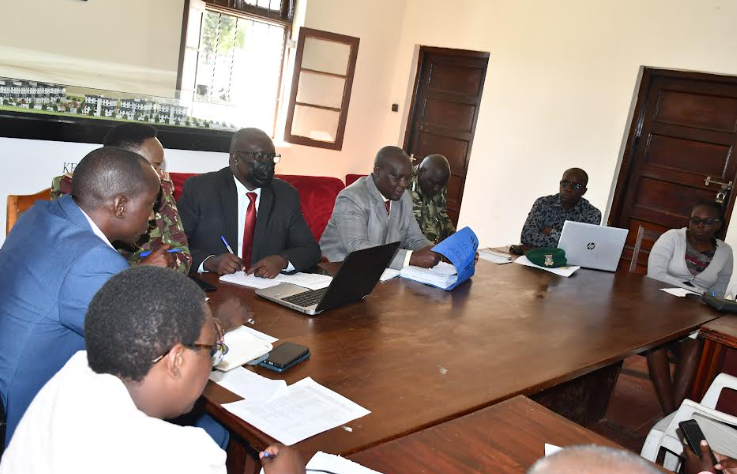The Rural Electrification and Renewable Energy Corporation (REREC) in Kericho County has received a major boost of Sh 329.25 million to connect more Kenyans to the National grid under the last-mile electricity connectivity projects.
The initiative, aimed at expanding electricity access to rural households, is expected to benefit 3,055 homes across all six constituencies in the county with the investment aligning the government’s broader strategy to enhance energy access and promote economic growth in underserved areas.
Speaking at the County Commissioner’s Boardroom during the National Government Development–County Implementation Coordination and Management Committee (NGD-CIMC), REREC Officer Robert Ruto in a report he presented to the committee chaired by the Kericho County Commissioner Gilbert Kitiyo, emphasized the importance of the electrification program.
“Electricity access is a game-changer for rural communities which fosters economic growth, enhances education, and improves healthcare services,” said Ruto.
The REREC officer added that the government has spent over Sh10 billion on rural electrification countrywide in the past two years.
The electrification project in Kericho involves 32 projects, with Soin Sigowet Sub- County receiving the highest funding at Sh87.73 million to support seven projects that will benefit 532 households while other sub- counties, including Ainamoi, Belgut, Kipkelion East, Kipkelion West, and Bureti, have also received substantial allocations to support electrification efforts. Bureti alone received Sh57 million, marking it as a priority area for grid expansion.
According to REREC’s report through its officer Ruto, the investment is part of Kenya’s Last Mile Connectivity Program (LMCP), which seeks to provide affordable and reliable electricity to rural areas.
“Our goal is to ensure that every household in Kericho County has access to power, which will stimulate local businesses, create jobs, and enhance security,” said Ruto.
The county commissioner, Gilbert Kitiyo urged the heads of departments overseeing implementation of National government projects to ensure that they are done and completed within the stipulated time.
“I call upon all stakeholders to prioritize the successful implementation of these initiatives. Let us work together to ensure that every project is completed on time and becomes fully operational to benefit our communities,” stated Kitiyo.
A significant aspect of the electrification initiative is the Matching Fund Partnership, a collaboration between REREC, county governments, and local stakeholders. Under this scheme, Sub- counties contribute funds that REREC matches to maximize project impact.
In addition, Ainamoi, Belgut, and Bureti sub- counties have raised sh12.3 million since 2014, which REREC has matched to bring the total investment to sh24.6 million.
“This partnership has been instrumental in accelerating rural electrification. By pooling resources, we can connect more households and institutions to the grid faster,” He noted.
The additional funding has facilitated critical projects, particularly in schools and health centers, ensuring that public institutions benefit from stable power connections.
In the upcoming 2024/2025 financial year, priority projects will focus on connecting schools, health centers, and tea-buying centers, which are vital to the local economy and among the beneficiaries are Cherungus Primary School, Kapsilangwa Primary School, and Binyiny Dispensary, which will soon be linked to the power grid.
“Education and healthcare remain top priorities in our electrification strategy,” Ruto affirmed.
Beyond electrification, the Ministry of Energy, in collaboration with REREC, has launched a forest restoration program in Kericho County, specifically targeting Londiani Forest with the initiative able to see 500,000 indigenous trees planted annually over the next ten years, translating into an investment of sh5.3 billion.
“This project aligns with our commitment to renewable energy and environmental conservation,” He added.
The tree-planting effort is expected to contribute significantly to Kenya’s afforestation goals while promoting sustainable energy solutions.
REREC officials noted that increasing tree cover will also help regulate rainfall patterns, improve biodiversity, and support the region’s agricultural sector.
By Dominic Cheres and Kelox Mutai




